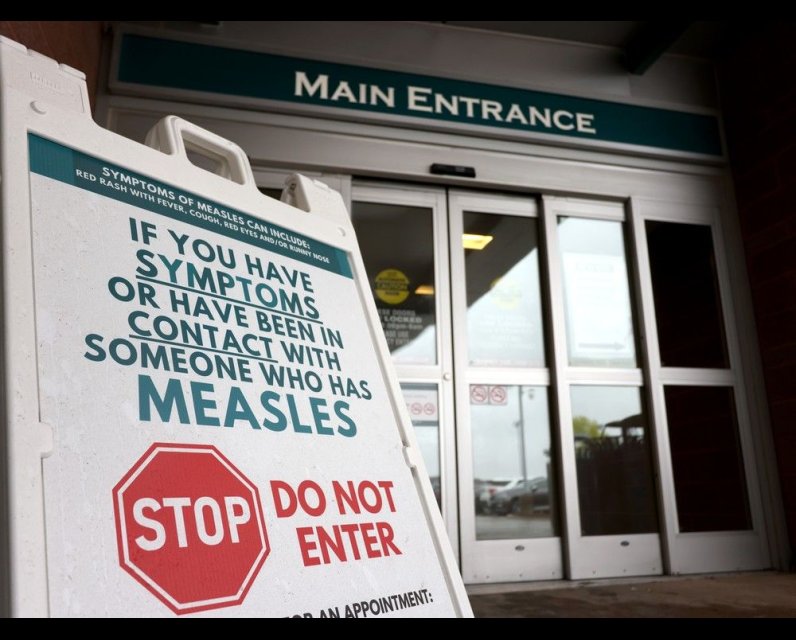Why Canada is about to lose the measles elimination status it has held since 1998

Canada is on the verge of losing the measles-elimination status it has held since 1998.
The World Health Organization’s definition of measles elimination requires transmission of the disease to stop within a 12-month period. Canada will cross that transmission threshold at the end of this month, following from an outbreak that started in October 2024.
Canada has tallied more than 5,000 cases this year, more than twice the amount of the cases recorded in the past 25 years combined.
As a result, this November, the Pan American Health Organization , a regional office of the World Health Organization office, will convene the annual meeting of its Measles and Rubella Elimination Regional Monitoring and Re-Verification Commission to determine Canada’s status .
How dangerous is measles?Measles is a human-only viral infection transmitted by respiratory droplets. It is considered one of the world’s most contagious infectious diseases, as one contagious person can infect 12-18 others. Approximately 40 per cent of people who contract measles are hospitalized, and for some it can be fatal, notably for children who unvaccinated.
Before the vaccine was available, epidemics were frequent, and 2.6 million lives were lost each year.
How does the incidence in Canada compare to the U.S.?In the United States, a total of 44 outbreaks and 1,596 cases have been reported in 2025, much fewer than Canada, but it’s still a five-fold jump over the 285 cases the U.S. reported last year.
While the original 2024 outbreaks ( Texas in the U.S., New Brunswick and Ontario in Canada) have been declared over, others states and provinces are still working to either stabilize outbreaks or manage recent flare-ups.
The vaccination rates for both countries have fallen below the 95 per cent threshold needed to prevent outbreaks , according to BlueDot, a website providing international data about infectious diseases, founded by Dr. Kamran Khan, a practising infectious disease physician and a professor of Medicine and Public Health at the University of Toronto.
The overwhelming majority (95 per cent) of Canada’s cases, says BlueDot, have been among people who were unvaccinated, under-vaccinated or have an unknown vaccination status.
What about the rest of the world?On a global scale, the incidence of measles largely coincides with low vaccination rates . Countries with high vaccination coverage, such as China, Norway, Sri Lanka and Turkey, have low incidence of measles. Countries with low vaccine coverage, including Cambodia, Mexico, Nigeria, and Romania, have high incidence of the disease.
How did international travel play a role in Canada’s latest outbreak?The Public Health Agency of Canada cited international travel as the initial source of the outbreak that began a year ago. Canada has since had had thousands of cases across 10 jurisdictions, including hundreds of hospitalizations and two deaths in infants who were born prematurely with infections contracted before birth.
Declining vaccination rates, say health authorities , often due to vaccine hesitancy and disruption of routine immunizations during the COVID-19 pandemic, have also played a significant role in the resurgence.
What role does the vaccine play in measles incidence?Most new cases have been in communities with lower vaccine uptake. Provinces such as Alberta, have experienced sharp declines in childhood vaccination and more than triple per capita measles case rates compared to other provinces. About 72 per cent of Albertan children had their second dose of the measles-mumps-rubella vaccine by age 7 as of 2024, down from about 82 per cent in 2019, according to provincial data. Alberta identified almost 2,000 measles cases since March, giving it the country’s highest case rate per capita.
Ontario’s population is more than triple Alberta’s. It has reported 2,375 cases as of early October. Ontario declared its outbreak over on October 6, after no new cases were reported in 46 days.
Meanwhile, Ontario has also seen vaccination rates slip, with measles inoculations down to 70.4 per cent for children by age 7 in 2024 from 86.1 per cent in 2020.
What’s next for Canada’s status?Public health authorities stress that restoring high vaccination rates is key to regaining measles elimination and preventing measles from becoming endemic again.
“This wouldn’t be the first time a country has lost, or nearly lost, its measles-free status,” says Dr. Mariana Torres Portillo, BlueDot’s head of surveillance.
Several countries have managed to regain control after significant outbreaks, says Dr. Torres Portillo, adding some, such as Morroco, Brazil and Hong Kong have successfully restored their measles-free status. “Hope is not lost. What we want to avoid now is seeing measles become endemic again in the Americas, and the key is to increase vaccine coverage.”
All of the World Health Organization’s regions have committed to eliminate measles by 2030.
Our website is the place for the latest breaking news, exclusive scoops, longreads and provocative commentary. Please bookmark nationalpost.com and sign up for our daily newsletter, Posted, here.



Comments
Be the first to comment